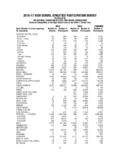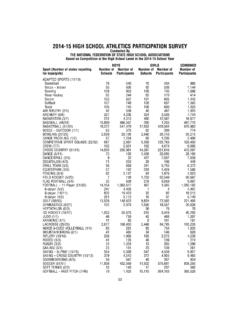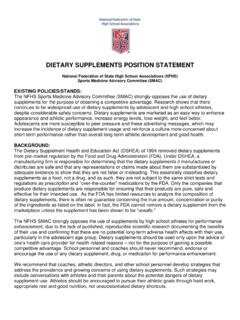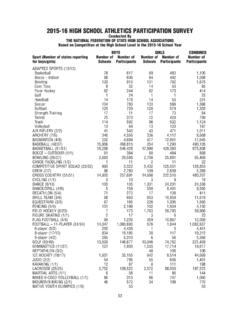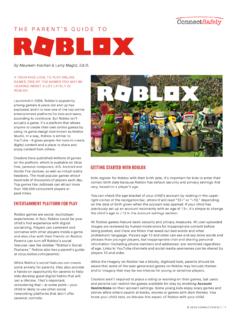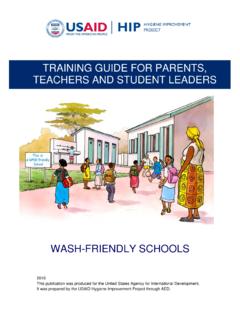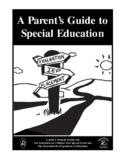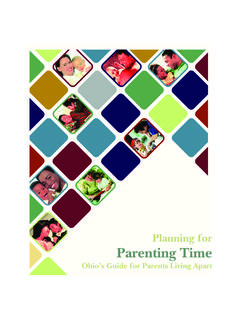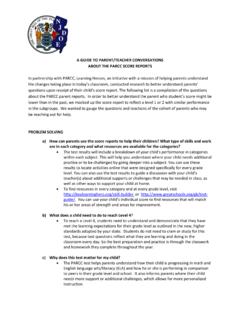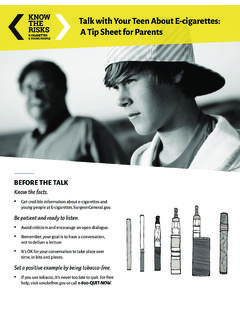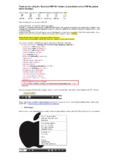Transcription of A Parent s / Guardian s Guide To Concussion - NFHS
1 A Parent s / Guardian s Guide To Concussion National Federation of State High School Associations ( nfhs ) Sports Medicine Advisory Committee (SMAC) What is a Concussion ? A Concussion is a brain injury that results in a temporary disruption of normal brain function. A Concussion occurs when the brain is violently moved within the skull, typically from a blow to the head or body. An athlete does not need to lose consciousness (be knocked-out ) to suffer a Concussion . In fact, less than ten percent of concussed athletes suffer loss of consciousness. Concussion Facts A Concussion is a type of traumatic brain injury. The result is a functional problem rather than a clear structural injury, causing it to be invisible to standard medical imaging (CT, or CAT scans, and MRI scans). It is estimated that over 300,000 high school athletes across the United States suffer a Concussion each year.
2 (Data from the nfhs Injury Surveillance System, High School RIOTM ) Concussions occur most frequently in football, but ice hockey, lacrosse, soccer, and basketball follow closely behind. All athletes are at risk, in all activities, regardless of gender. A Concussion may cause multiple symptoms that can be categorized as physical, behavioral, and cognitive. Physical symptoms include headaches, dizziness, and sleep changes, among others. Some behavioral changes include irritability, anxiety, and depression. Cognitive symptoms, or thinking changes, include trouble with focus, memory, and word finding. Many symptoms appear immediately after the injury, while others may develop over the next several days. Concussions can result in symptoms that interfere with normal daily life in addition to difficulty with school, work, and social life.
3 Concussion symptoms may last from a few days to several months. It is important to remember that each student athlete responds and recovers differently. Athletes should not return to sports or activities that will put them at risk for another head injury until the Concussion has completely resolved. To do so puts them at risk for prolonged symptoms and a more severe injury. Participation in physical education classes or exercise should be discussed with a qualified appropriate health-care professional. What should I do if I think my child has had a Concussion ? If an athlete is suspected of having a Concussion , the athlete must be immediately removed from that activity and be evaluated by a qualified appropriate health-care professional. Continuing to exercise, practice, or play when experiencing Concussion symptoms can lead to worsening of symptoms, increased risk for further injury and rarely death.
4 parents and coaches are not expected to make the diagnosis of a Concussion . A medical professional trained in the diagnosis and management of concussions will do so. However, you must be aware of the signs and symptoms of a Concussion . If you are suspicious that your child has suffered a Concussion , your child must stop activity right away and be evaluated. When in doubt, sit them out! All student-athletes who sustain a Concussion need to be evaluated by a health care professional who is experienced in Concussion management. If your child's school has an athletic trainer (AT), please inform the AT of your concerns. You should call your child s physician and explain what has happened and follow your physician s instructions. If your child is vomiting, has a severe headache, is having difficulty staying awake or difficulty answering simple questions, you should take your child for immediate emergency medical attention.
5 What are the signs and symptoms of a Concussion ? SIGNS OBSERVED BY parents , ATHLETIC TRAINERS, FRIENDS, TEACHERS OR COACHES SYMPTOMS REPORTED BY ATHLETE Appears dazed or stunned Headache Is confused about what to do Nausea Forgets plays Balance problems or dizziness Is unsure of game, score, or opponent Double or fuzzy vision Moves clumsily Sensitivity to light or noise Answers questions slowly Feeling sluggish Loses consciousness Feeling foggy or groggy Shows behavior or personality changes Concentration or memory problems Can t recall events prior to hit Confusion Can t recall events after hit When can an athlete return to play following a Concussion ? After suffering a Concussion , no athlete should EVER return to play or practice on that same day. Studies have shown that the young brain does not recover quickly enough for an athlete to safely return to activity in such a short time.
6 Concerns over athletes returning to play too quickly have led lawmakers in all 50 states and the District of Columbia to pass laws stating that no player shall return to play the day of a Concussion , and the athlete must be cleared by an appropriate health-care professional before being allowed to return to play in games or practices. The laws typically also mandate that players, parents and coaches receive education on the dangers and recognizing the signs and symptoms of Concussion . Click here to see what your state law requires: Once an athlete no longer has symptoms of a Concussion AND is cleared for return to play, the athlete should proceed with activity in a step-wise fashion in a carefully controlled and monitored environment to allow the brain to re-adjust to exertion. On average, the athlete will complete a new step every 24 hours.
7 Please be aware that some states mandate for a longer duration before return to play. An example of a typical return-to-play schedule is shown below: Step 1: Light exercise, including walking or riding an exercise bike. No weightlifting. Step 2: Running in the gym or on the field. No helmet or other equipment. Step 3: Non-contact training drills in full equipment. Weight training can begin. Step 4: Full contact practice or training. Step 5: Game play. If symptoms occur at any step, the athlete should immediately stop activity and consult with a qualified appropriate health-care professional before moving on. How can a Concussion affect schoolwork? Following a Concussion , many student-athletes have difficulty in school. These problems may last from days to months and often involve difficulties with short-term memory, concentration and organization.
8 In many cases after the injury, it is best to decrease the athlete s class load early in the recovery phase. This may include staying home from school for a few days, followed by academic adjustments (such as a reduced class schedule), until the athlete has fully recovered. Decreasing the stress on the brain and not allowing the athlete to push through symptoms will hasten the recovery time and ensure total resolution of symptoms. What can I do? Both you and your child should learn to recognize the Signs and Symptoms of Concussion as listed above. Encourage your child to tell the medical and/or coaching staff if any of these signs and symptoms appear after a blow to the head or body. Emphasize to administrators, coaches, physicians, athletic trainers, teachers and other parents your concerns and expectations about Concussion and safe play.
9 Encourage your child to tell the medical and coaching staff if there is suspicion that a teammate has suffered a Concussion . Ask teachers to monitor any decrease in grades or changes in behavior in students that could indicate a Concussion . Report concussions that occurred during the school year to appropriate school staff. This will help in monitoring injured athletes as they move to the next season s sports. Click here for more information about returning to school after a Concussion : Other Frequently Asked Questions: Why is it so important that athletes not return to play until they have completely recovered from a Concussion ? Student-athletes that return to play too soon may lengthen their recovery time. They also risk recurrent, cumulative or even catastrophic consequences if they suffer another Concussion .
10 Such risk and difficulties are prevented if each athlete is allowed time to recover from a Concussion and the return-to-play decisions are carefully and individually made. No athlete should return to sport or other at-risk activity when signs or symptoms of Concussion are present and recovery is ongoing. Is a CAT scan or MRI needed to diagnose a Concussion ? No! Concussion diagnosis is based upon the athlete s history of the injury and an appropriate health-care professional s physical examination and testing. CT and MRI scans are rarely needed following a Concussion . However, they are helpful in identifying life-threatening head and brain injuries such as skull fractures, bleeding or swelling. What is the best treatment to help my child recover quickly from a Concussion ? Treatment for Concussion varies from one person to the next.


